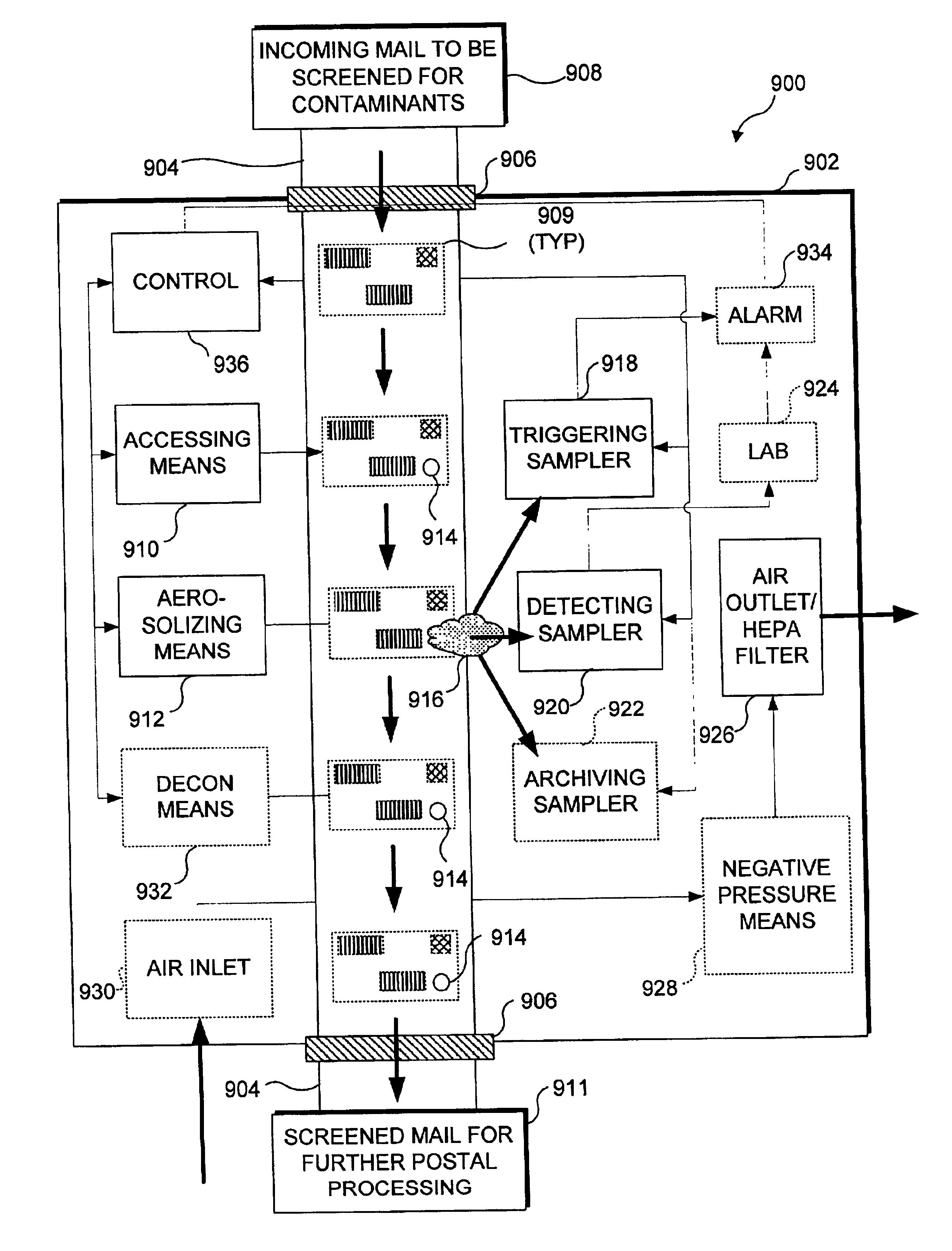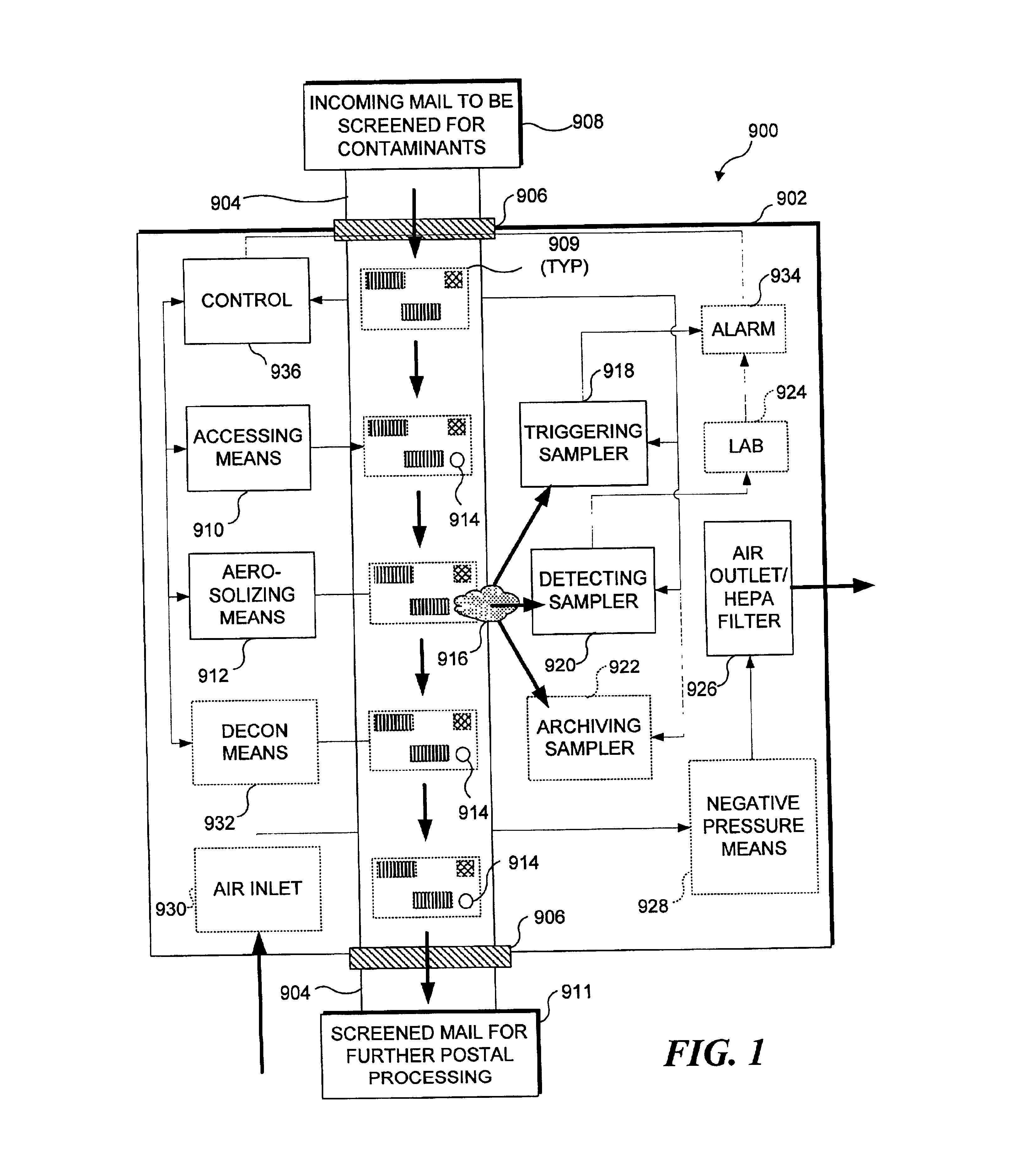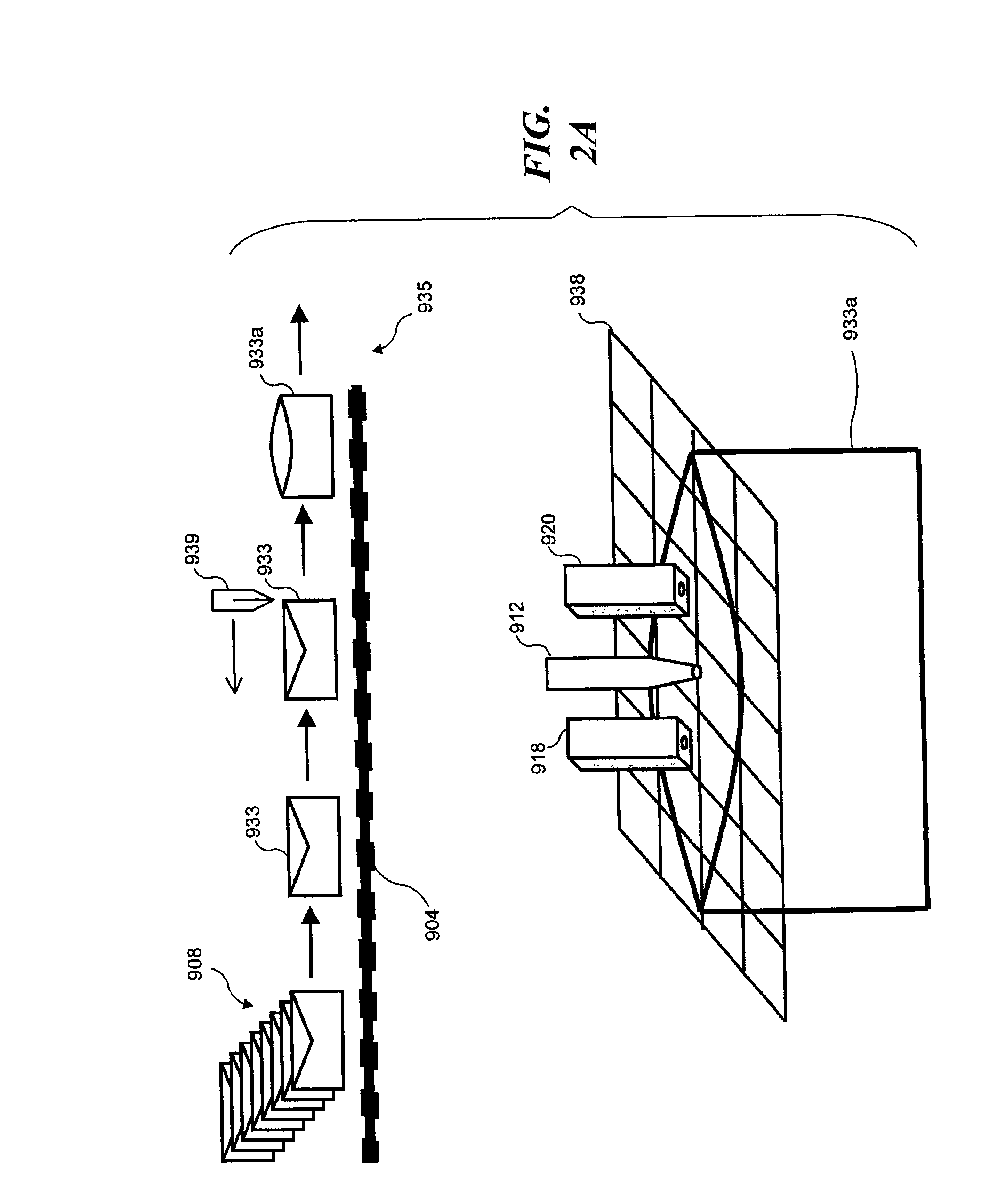Robust system for screening mail for biological agents
- Summary
- Abstract
- Description
- Claims
- Application Information
AI Technical Summary
Benefits of technology
Problems solved by technology
Method used
Image
Examples
Embodiment Construction
Overview
[0093]The present invention relates to a method and apparatus for rapidly analyzing containers to determine if such containers are contaminated with chemical or biological agents.
[0094]It should be noted that the preferred embodiments described below are particularly well adapted to screen items of mail for chemical or biological agents. Thus while a preferred embodiment of the invention, described in detail below, refers to screening items of mail, it should be understood that other items can also be screened for chemical or biological agents using the present invention. For examples, private delivery companies specializing in delivering packages more rapidly than the USPS could use the principles of the present invention to screen packages they accept for delivery. Similarly, freight companies that transport packaged goods over the road may also employ the concepts described herein to screen packages they accept for delivery. Clearly, the principles of the present inventio...
PUM
| Property | Measurement | Unit |
|---|---|---|
| Wavelength | aaaaa | aaaaa |
| Wavelength | aaaaa | aaaaa |
| Pressure | aaaaa | aaaaa |
Abstract
Description
Claims
Application Information
 Login to View More
Login to View More - R&D
- Intellectual Property
- Life Sciences
- Materials
- Tech Scout
- Unparalleled Data Quality
- Higher Quality Content
- 60% Fewer Hallucinations
Browse by: Latest US Patents, China's latest patents, Technical Efficacy Thesaurus, Application Domain, Technology Topic, Popular Technical Reports.
© 2025 PatSnap. All rights reserved.Legal|Privacy policy|Modern Slavery Act Transparency Statement|Sitemap|About US| Contact US: help@patsnap.com



